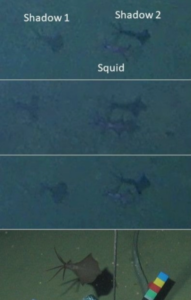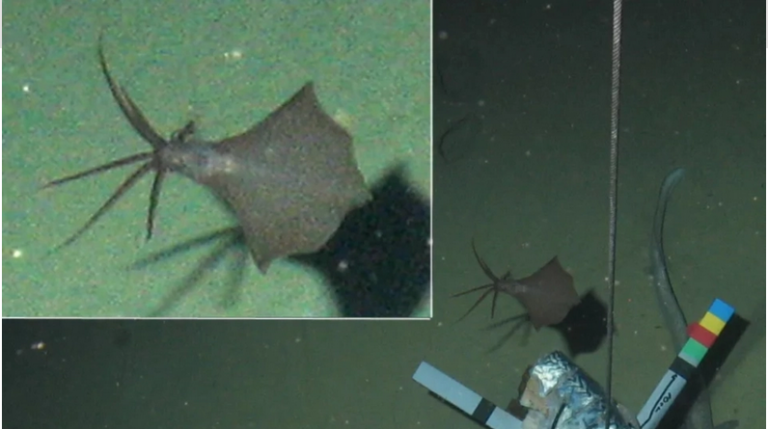A young Bigfin squid (of the genus Magnapinnidae) was found by researchers above the bottom of the Philippine moat, 6,200 meters below sea level.
The previous record was held by another Bigfin squid which was found at 4,700 meters below the Pacific Ocean.
Four Cirrate octopuses were recorded on the researchers’ radar at about the same depth. According to Michael Veccione, co-author of the study, this is the second time dumbo octopuses have been observed at such a great depth. This proves that the previous observations of cephalopods in Java trench were not accidental.
“This dive has shown that multiple species of cephalopods can live at least in the upper reaches of these really deep ocean trenches”, said Vecchione, a zoologist with the National Oceanic and Atmospheric Administration (NOAA) at the Smithsonian Institution in Washington.
“How do these squid manage to live normally at depths ranging from 1,000 to 6,000 meters, where atmospheric pressures can be up to 600 times higher than at the ocean surface?” he wonders.

Crete and Rhodes among the top choices for German holidaymakers for next summer
The Bigfin was spotted in March 2021 while searching for the wreck of the USS Johnston (a US Navy destroyer that sank in 1944 during the Battle of Leyte Bay).
With the help of the manned submarine DSV Limiting Factor (the same type of submarine used by explorer Victor Vescovo to descend to the bottom of the Mariana Trench in June 2020), the researchers videotaped the dive into the bottom of the Philippine trench, which lasted more than four hours.
The research team located the giant squid over the ocean floor. Despite the fact that the submarine was very high and it was difficult to record the squid in detail, scientists were finally able to see some of its features such as its extremely large rear fins but also the special way of swimming.
Thus they confirmed its identity. In fact, they assumed that it was a young squid as its tentacles were relatively short. The research team published its findings in the journal Marine Biology.
Ask me anything
Explore related questions





